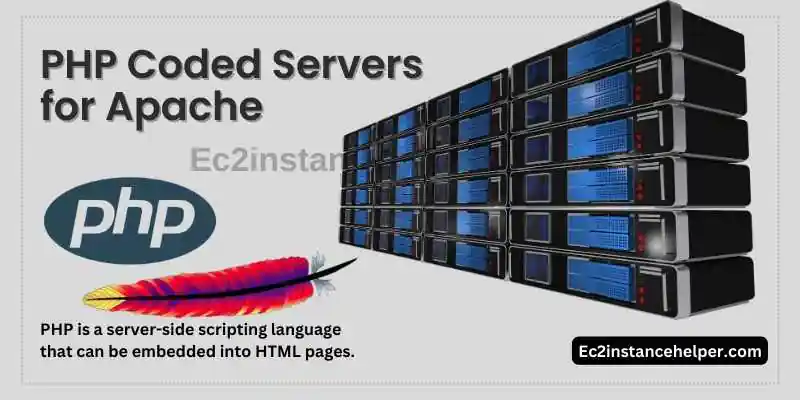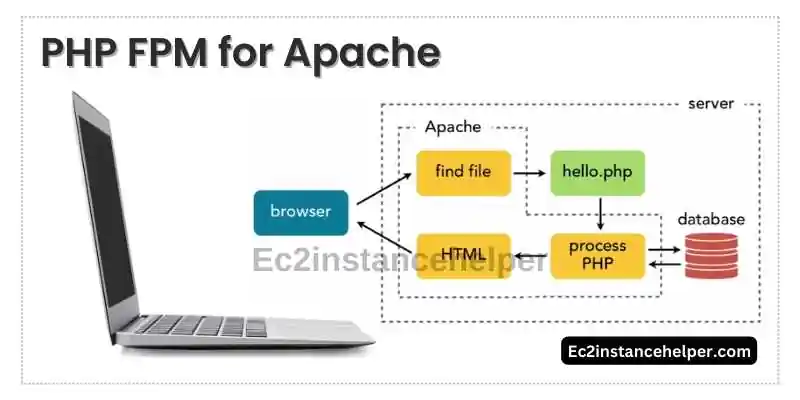PHP is a powerful scripting language widely used for developing dynamic and interactive web applications. When it comes to running PHP applications, Apache HTTP Server is one of the most popular web servers available. Mastering the integration of PHP with Apache is essential for unleashing the full potential of your web development projects. In this comprehensive guide, we will take you on a journey to master PHP in Apache, providing you with a step-by-step walkthrough of configuring Apache to handle PHP files seamlessly. From installing PHP and Apache to configuring the necessary modules and fine-tuning performance, this guide will equip you with the knowledge and skills to handle PHP files in Apache like a pro.
A brief introduction to Apache 
Apache is a free open-source software that serves as a web server for the majority of websites on the internet. Apache’s popularity has made it the most popular web server in the world, and it is used on over 70% of all active websites on the internet. Apache can be installed on many operating systems, such as Windows, Linux, and Mac OS.
The sheer number of users makes it pretty much the default choice of web servers for most websites.
PHP Coded Servers for Apache 
PHP is a server-side scripting language that can be embedded into HTML pages. Its code files are executed by the PHP interpreter on the server. It can be used to create dynamic web pages and for form processing. PHP code is processed on the server, so users do not have to download and run it before every request. This makes PHP efficient in terms of performance, especially when compared to other CGI script options which are executable and must be downloaded before being executed. There are four basic methods to call PHP scrips via Apache
- Mod_Apache module
- CGI
- Fast CGI
- PHP FPM
Apache module
The Apache module mod_php is the most popular way to run PHP on your web server. It is also deemed as the defacto method of processing PHP files when setting up Apache.
It is important to note that while doing Mod Apache, PHP interpreter is executed by Apache and every Apache process will then carry the PHP interpreter executable, which makes it very heavy RAM usage-wise.
The following features and downsides of mod_php option:
- PHP code executed by Apache, which means that your running scripts are able to log and access environment variables, read input from standard input, send output to standard output as well as access other resources provided by Apache such as status codes and headers.
- You can customize any aspect of your PHP configuration settings in .htaccess config file. This allows you to set up environments like development or production with different configurations depending on what needs changing between them (e.g., different file permissions).
- Apart from the fact that mod_php is generally memory intensive for PHP scripts, it loads PHP interpreter even for static files content requests and delivery which makes it even more inefficient.
Apache CGI mode
The Apache CGI mode is the simplest way to run PHP on Apache and used to be the default way of running and processing dynamic contents, a couple of decades back.
Now pretty much, for the most part, the CGI option is out of fashion and obsolete and replaced by better methods.
If you remember websites likes below:
www.somewebsite.com/cgi-bin/somestufftodo
In this mode, all PHP code is executed by a server-side interface, not by the server, hence memory spaces for the server and PHP become exclusive which makes this more secure. The CGI-bin directory contains all your scripts. When a request is made, the server executes each of these files sequentially and sends their output back to the browser. This method works well as long as there are no errors in your script. If there are any issues, then you might need additional workarounds such as error handling or logging, etc., which would be difficult to implement when using CGI mode of serving PHP pages through the Apache web server
While CGI mode works well for serving static pages, it doesn’t work so well with dynamic content in terms of memory usage, because it creates a new process for each request until they are terminated by Apache.
The more time you spend on serving a request, the slower the response will be. This is because each process needs to initialize before it can service requests, and then terminated when it’s done.
Apache fastCGI
FastCGI is a protocol for interfacing interactive programs with a web server. FastCGI is used mostly with PHP scripts, but it also supports other web programming languages, such as Perl, Python, and Tcl.
Apache mod_fcgid is an optional module that implements the FastCGI protocol for Apache HTTPD web servers version 2.2 or later.
In this very setup of executing the PHP scripts, the communication between PHP and Webserver is handled via socket communication which makes it pretty efficient security-wise as Web Server and PHP environment has isolated memory spaces.
In FastCGI case though, you need to set up a separate PHP configuration as it will not be read PHP config directives from Apache configuration files.
One major benefit of Fast CGI is static stuff delivered will not use PHP executable hence saving valuable RAM real state.
Apart from the fact that PHP FPM is quite similar to Fast CGI in the way it handles the requests, it is much better in terms of
- Adaptive process control
- Error handling
PHP FPM for Apache 
PHP FPM (FastCGI Process Manager) is fast becoming popular and is a very good scalable option for heavy-traffic websites. It is sort of an alternative to FastCGI. It processes the request pipeline the same way as Fast CGI however the strategy for generating Apache processes is far more flexible and adaptive hence making it memory efficient relatively.
PHP FPM is a brand-new and highly optimized method of executing PHP scripts for high-traffic websites
However, it is to be noted that
PHP FPM has known vulnerabilities and security shortfalls or issues that make it inferior to the FastCGI option
PHP FPM is a bit harder to configure.
Configuration Overhead for Fast CGI and FPM
FastCGI and PHP-FPM are two better alternatives to CGI that offer better performance compared to the classic module. Both of these can be configured by setting up FastCGI parameters through the Apache configuration file. Additionally, it’s important to adjust certain settings in your php.ini, such as fastcgi_params and CGI.fix_pathinfo. Once this is done, Apache can detect PHP files and pass them to the appropriate handler accordingly
Which Apache PHP execution method should you choose for your website? 
It’s important to understand the advantages and disadvantages of handling PHP files in Apache with all available methods. The classic Apache module is the simplest option, but it doesn’t offer the same performance or scalability as FastCGI and PHP-FPM. CGI just may be suitable for smaller projects ( Not recommended), while FastCGI and FPM are better suited for larger ones that require greater speed and resource efficiency. Ultimately, choosing one over the other should depend on your specific project needs.
Obviously, each project will have its own demands, we personally shall vote for PHP FPM for busy, heavy-traffic websites as it is a far better-optimized solution for traffic handling and conserving memory. Mod_PHP or FastCGI is also great for low-traffic websites and it is easier to maintain and configure and has better security.
